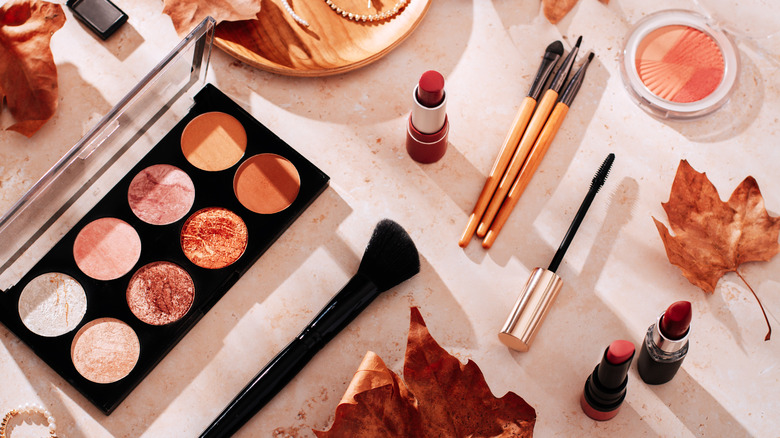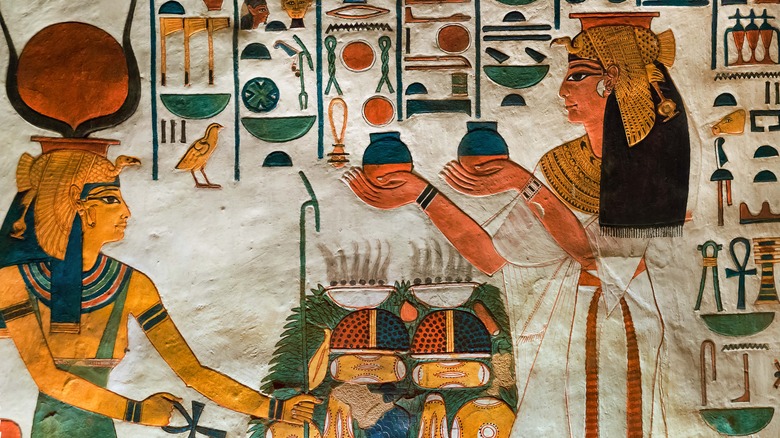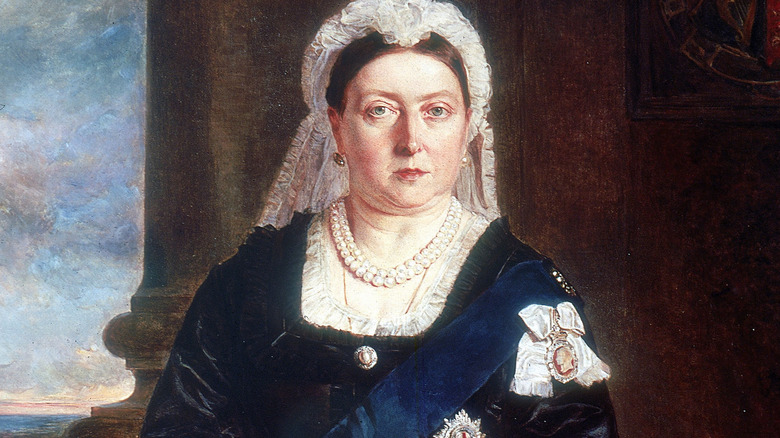Who Actually Invented Makeup?
Despite inflation and the cost of living skyrocketing across the globe, the makeup industry has seen a huge spike in sales over the course of this past year (via CNBC). Many are still in the process of returning to the office after the pandemic, alongside attending more and more parties, weddings, and other events that give us an excuse to splash out on a new lipstick or eyeshadow palette. In addition to that, these products have the incomparable ability to make you feel better during times of trouble.
As Creighton Kiper, Walmart's vice president of merchandising for beauty, explained: "You've got this mental wellness component to it around confidence and feeling good about yourself." It's this sense of looking, and feeling, better that has attracted consumers to cosmetics for hundreds of years, which research proves, per Psychology Today. But where exactly did all these products come from, and who invented makeup in the first place?
The history of makeup can be traced back thousands of years
Those who used makeup to channel Cleopatra for Halloween will be excited to learn that, collectively, the Ancient Egyptians could be cited as inventing it. However, stories about cosmetic products such as rudimentary nail polish and blusher stretch back to the first millennium BCE, per Nuvo magazine. The first proper use of cosmetics appeared a whopping 5,000 years ago, according to Natural Receipts. Ancient Egyptians created the essential building blocks of makeup, particularly kohl eyeliner, which is still used to this day (via Vice).
And, by mixing kohl powder with different dyes, the Egyptians were able to create blue and red colors, which you can see today in Egyptian art and hieroglyphs (via CNN Style). They also made eyeshadow, lipstick, and blush by mixing minerals and clay pigment together with animal fat. According to Natural Receipts, makeup traveled from Egypt to Greece, then onward to Rome.
The Greeks were the first to use the term "cosmetics," though. Likewise, face powders originated from the Romans and Greeks, who crushed up stones to make fine powders that would make their complexions lighter (via Nuvo magazine). African, Aborigine, and Indigenous cultures also utilized similar practices, creating face paint from clay which they "colored with dried plants and flowers to convey messages within their communities."
Queen Victoria was not a fan of cosmetic products
As societies and civilizations evolved worldwide, makeup was seen as "impure" (via Kaja Beauty). Instead, a more "natural aesthetic" was preferred. This was especially the case during the Victorian period when Queen Victoria declared that wearing makeup was "impolite" (via Hair & Makeup Artist Handbook). But makeup and cosmetics were still around, with the Western cosmetic industry establishing its roots in the 1800s as companies such as Rimmel and Guerlain were founded.
By the early 20th century, the invention of cameras, the wider use of mirrors and lighting, and the first rumblings of what would become the film industry saw makeup and cosmetics make a triumphant return. Eye products gained greater importance in the makeup industry, with New York-based company Maybelline selling their first eyelash and eyebrow products in 1917. They were originally made from a mixture of coal dust and petroleum jelly, according to Cosmetics and Skin.
Notably, this was a remarkably similar recipe to the kohl powder initially used by the Ancient Egyptians, emphasizing how it all came full circle in the end.


